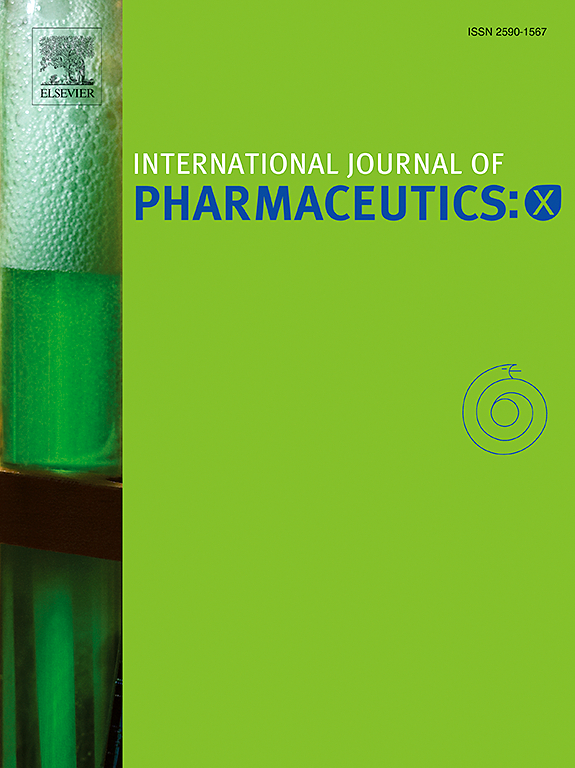使体外释放和配方数据ai就绪:流线型纳米药物开发的基础
IF 6.4
2区 医学
Q1 PHARMACOLOGY & PHARMACY
引用次数: 0
摘要
机器学习和人工智能(AI)正在改变药物发现、工艺工程和制药功能的药物产品开发方式。用于纳米医学开发的人工智能正在实现对关键质量属性(cqa)更快、更准确的预测。然而,人工智能的全部潜力受到数据质量和可访问性的限制。与化学科学等邻近领域不同,药剂学领域缺乏经过管理的、开放获取的数据库,尤其是纳米药物数据库。为了解决这个问题,我们策划了一个开放访问的本地数据库,专注于脂质体配方。该数据库包括制剂参数、体外释放(IVR)测试条件和数字化药物释放数据。通过定性和定量地评估数据库中的条目,我们确定了当前数据报告实践中的挑战。这包括制剂和IVR测试条件的不完整报告,以及药物释放图及其数据格式的质量不一致。基于我们的分析,我们提出了一套数据标准和数据库结构,以支持纳米药物配方和IVR数据的协调。我们的开放访问数据库旨在提高数据的可访问性和透明度,以实现用于IVR和CQA预测的强大AI模型的开发,最终简化纳米医学的开发。本文章由计算机程序翻译,如有差异,请以英文原文为准。
Making in vitro release and formulation data AI-ready: A foundation for streamlined nanomedicine development
Machine learning and artificial intelligence (AI) is transforming the way pharmaceutical products are developed across drug discovery, process engineering, and pharmaceutics functions. AI for nanomedicine development is enabling faster and more accurate prediction of critical quality attributes (CQAs). However, the full potential of AI is limited by the quality and accessibility of data. Unlike adjacent fields such as the chemical sciences, the pharmaceutics domain lacks curated, open-access databases, particularly for nanomedicines. To address this, here we curate an open-access local database focused on liposomal formulations. The database includes formulation parameters, in vitro release (IVR) testing conditions, and digitised drug release data. By evaluating the entries in the database qualitatively and quantitatively, we identified challenges in current data reporting practices. This includes incomplete reporting of formulation and IVR testing conditions, as well as inconsistent quality of drug release plots and their data format. Based on our analysis, we propose a set of data standards and a database structure to support harmonisation for nanomedicine formulation and IVR data. Our open-access database aims to improve data accessibility and transparency to enable the development of robust AI models for IVR and CQA prediction, ultimately streamlining nanomedicine development.
求助全文
通过发布文献求助,成功后即可免费获取论文全文。
去求助
来源期刊

International Journal of Pharmaceutics: X
Pharmacology, Toxicology and Pharmaceutics-Pharmaceutical Science
CiteScore
6.60
自引率
0.00%
发文量
32
审稿时长
24 days
期刊介绍:
International Journal of Pharmaceutics: X offers authors with high-quality research who want to publish in a gold open access journal the opportunity to make their work immediately, permanently, and freely accessible.
International Journal of Pharmaceutics: X authors will pay an article publishing charge (APC), have a choice of license options, and retain copyright. Please check the APC here. The journal is indexed in SCOPUS, PUBMED, PMC and DOAJ.
The International Journal of Pharmaceutics is the second most cited journal in the "Pharmacy & Pharmacology" category out of 358 journals, being the true home for pharmaceutical scientists concerned with the physical, chemical and biological properties of devices and delivery systems for drugs, vaccines and biologicals, including their design, manufacture and evaluation. This includes evaluation of the properties of drugs, excipients such as surfactants and polymers and novel materials. The journal has special sections on pharmaceutical nanotechnology and personalized medicines, and publishes research papers, reviews, commentaries and letters to the editor as well as special issues.
 求助内容:
求助内容: 应助结果提醒方式:
应助结果提醒方式:


